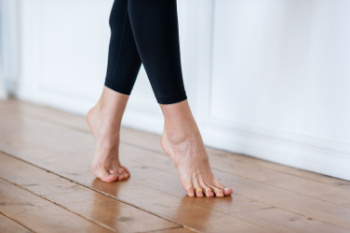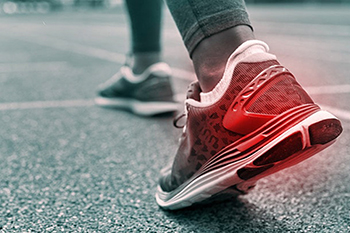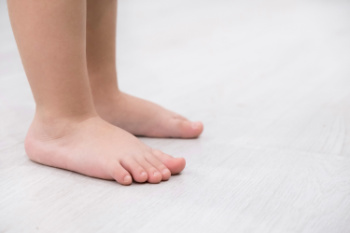NJ (908) 688-5577
NY (212) 737-2528

Toe stretches are an often overlooked yet important component of maintaining healthy feet. These simple exercises can help improve flexibility, mobility, and strength in the toes, ultimately enhancing overall foot function and reducing the risk of discomfort and injury. One beneficial toe stretch is the toe spread, where you gently separate your toes and hold for a few seconds, promoting better alignment and circulation. Another effective stretch is the toe curl, which is done by alternately flexing and extending each toe, thereby improving dexterity and range of motion. Additionally, toe scrunches, where you grip a small object with your toes and release, can help strengthen the muscles of the foot and improve balance. Regularly incorporating these toe stretches into your daily routine can help to alleviate tension, relieve foot pain, and prevent common issues, such as bunions, plantar fasciitis, and toe cramps. If you have toe pain and seek additional information about the benefits of stretching the toes, it is suggested that you consult a podiatrist.
Stretching the feet is a great way to prevent injuries. If you have any concerns with your feet consult with Glenn Davison, DPM from Advanced Podiatry. Our doctor will assess your condition and provide you with quality foot and ankle treatment.
Stretching the Feet
Stretching the muscles in the foot is an important part in any physical activity. Feet that are tight can lead to less flexibility and make you more prone to injury. One of the most common forms of foot pain, plantar fasciitis, can be stretched out to help ease the pain. Stretching can not only ease pain from plantar fasciitis but also prevent it as well. However, it is important to see a podiatrist first if stretching is right for you. Podiatrists can also recommend other ways to stretch your feet. Once you know whether stretching is right for you, here are some excellent stretches you can do.
It is best to go easy when first stretching your foot and work your way up. If your foot starts hurting, stop exercising and ice and rest the foot. It is advised to then see a podiatrist for help.
If you have any questions, please feel free to contact our offices located in Union, NJ and New York . We offer the newest diagnostic and treatment technologies for all your foot care needs.

Choosing the right running shoe is vital for enhancing comfort, preventing injuries, and optimizing performance. When selecting a running shoe, it is essential to consider factors such as arch types, and pronation, which is the natural inward rolling motion of the foot during the running gait cycle. Understanding your pronation pattern, whether neutral, overpronation, or excessive inward rolling, and supination, or insufficient inward rolling, can guide you in choosing the appropriate shoe features. For example, individuals with overpronation may benefit from stability or motion-control shoes with added support to help correct excessive inward rolling. Conversely, those with neutral pronation may opt for neutral cushioned shoes offering balanced support and flexibility. Additionally, considering your arch type whether it is high, medium, or low can further refine your shoe selection, as certain shoes are designed to accommodate different arch heights and provide adequate support. If you are interested in learning what type of arch you have that will help you in buying the right running shoe, it is suggested that you consult a podiatrist.
You should always make sure your running shoes fit properly in order to avoid injury. For more information, contact Glenn Davison, DPM from Advanced Podiatry. Our doctor can provide the care you need to keep you pain-free and on your feet.
Choosing the Right Running Shoe for Your Foot Type
Improper shoe sizing can cause a myriad of problems for your feet. Shoes that don’t fit you properly can lead to muscular imbalances in your body, which can result in foot, knee, and hip injuries.
Tips for Finding the Right Running Shoe
If you have any questions please feel free to contact our our offices located in Union, NJ and New York . We offer the newest diagnostic and treatment technologies for all your foot and ankle needs.

Flat feet, a common condition characterized by a lack of arch in the foot, can potentially affect the physical performance of school-age children. While flat feet themselves may not directly hinder a child's ability to engage in physical activities, they can contribute to issues such as foot pain, fatigue, and decreased stability. Children with flat feet may experience discomfort or cramping during prolonged periods of standing or walking, impacting their participation in sports or physical education classes. Furthermore, flat feet may alter the biomechanics of the lower limbs, leading to poor posture, balance problems, and an increased risk of injury. Addressing flat feet early on through proper footwear, orthotic inserts, and targeted exercises can help alleviate symptoms and improve physical performance in children. By recognizing the potential impact of flat feet on physical activity, parents and educators can take proactive steps to support the overall well-being and participation of school-age children in various physical pursuits. If your child has flat feet, it is suggested that a podiatrist is contacted who can offer effective relief and treatment methods.
Flatfoot is a condition many people suffer from. If you have flat feet, contact Glenn Davison, DPM from Advanced Podiatry. Our doctor will treat your foot and ankle needs.
What Are Flat Feet?
Flatfoot is a condition in which the arch of the foot is depressed and the sole of the foot is almost completely in contact with the ground. About 20-30% of the population generally has flat feet because their arches never formed during growth.
Conditions & Problems:
Having flat feet makes it difficult to run or walk because of the stress placed on the ankles.
Alignment – The general alignment of your legs can be disrupted, because the ankles move inward which can cause major discomfort.
Knees – If you have complications with your knees, flat feet can be a contributor to arthritis in that area.
Symptoms
Treatment
If you are experiencing pain and stress on the foot you may weaken the posterior tibial tendon, which runs around the inside of the ankle.
If you have any questions please feel free to contact our offices located in Union, NJ and New York . We offer the newest diagnostic and treatment technologies for all your foot and ankle needs.